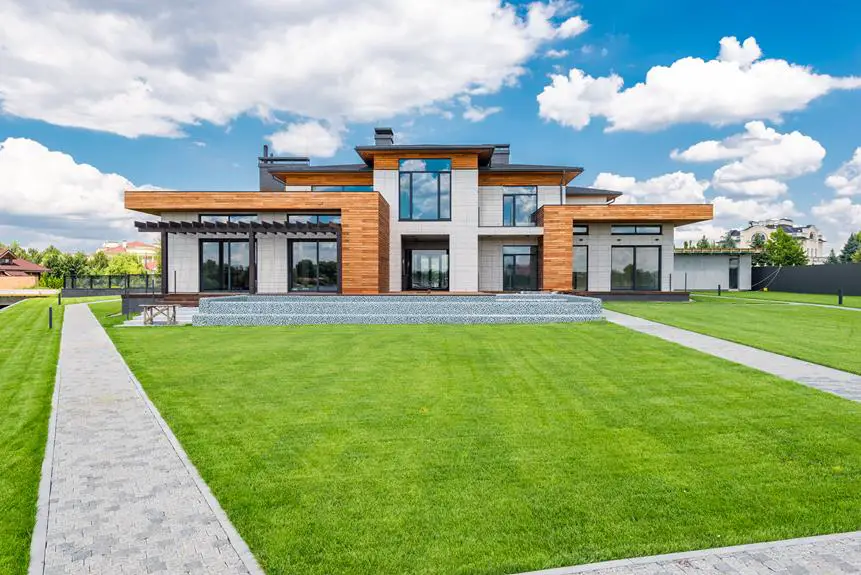In the realm of environmental policy, the Green New Deal has emerged as a towering force, stirring both hope and controversy. Like a gust of fresh air, it promises a transformative shift towards renewable energy, job creation, and social justice.
However, lurking in the shadows are concerns about its potential cost, political opposition, and the challenges of funding such an ambitious endeavor. This article delves into the pros and cons of the Green New Deal, shedding light on its promises and pitfalls.
Key Takeaways
- The Green New Deal has the potential to stimulate the economy and create new jobs through the transition to a clean energy economy.
- Transitioning to renewable energy sources can significantly reduce greenhouse gas emissions and lower carbon footprints.
- Investing in sustainable infrastructure and renewable energy can contribute to climate change mitigation efforts and build climate-resilient communities.
- The Green New Deal aims to promote social and environmental justice by creating well-paying, union jobs in the clean energy sector and benefiting historically marginalized communities.
Economic Stimulus and Job Creation
The Green New Deal frequently emphasizes the potential for economic stimulus and job creation. Advocates argue that transitioning to a clean energy economy will create millions of new jobs and boost economic growth. They believe that investing in renewable energy, energy efficiency, and sustainable infrastructure won't only reduce greenhouse gas emissions but also create a thriving green industry. By promoting the use of renewable energy sources such as solar and wind power, the Green New Deal aims to reduce dependence on fossil fuels and create a more sustainable and resilient economy.
Proponents of the Green New Deal point to success stories from countries like Germany, where the adoption of renewable energy has led to the creation of hundreds of thousands of new jobs. They argue that investing in clean energy technologies won't only create job opportunities in the manufacturing and installation of solar panels and wind turbines but also in research and development, maintenance, and energy management.
Critics, however, express concerns about the cost and feasibility of implementing such a comprehensive plan. They argue that the Green New Deal's ambitious goals could lead to skyrocketing government spending and potentially burden taxpayers. Additionally, some skeptics question whether the transition to clean energy will actually create as many jobs as proponents claim, suggesting that there may be job losses in industries such as coal mining and fossil fuel production.
While the potential for economic stimulus and job creation is a key aspect of the Green New Deal, there are differing opinions on its feasibility and effectiveness. Further analysis and debate are needed to determine the true impact of this proposed policy.
Renewable Energy Transition
Renewable energy transition offers a sustainable solution to reduce carbon emissions and mitigate the impacts of climate change. As the world continues to grapple with the consequences of climate change, transitioning to renewable energy sources has become a top priority for many countries and organizations.
Renewable energy, such as solar, wind, and hydroelectric power, generates electricity without releasing harmful greenhouse gases into the atmosphere.
One of the significant advantages of renewable energy is its potential to significantly reduce carbon emissions. Fossil fuel combustion is the primary source of greenhouse gas emissions, which contribute to global warming. By transitioning to renewable energy sources, countries can decrease their reliance on fossil fuels and subsequently lower their carbon footprints. This shift will help slow down the rate of climate change and alleviate its adverse effects on the environment.
Moreover, renewable energy transition also brings economic benefits. It creates new job opportunities and stimulates economic growth. The renewable energy sector has the potential to generate millions of jobs in various fields, such as manufacturing, installation, and maintenance. This not only provides employment opportunities but also promotes local economic development.
While there are challenges associated with renewable energy transition, such as initial costs and intermittency issues, the long-term benefits outweigh these drawbacks. It's crucial for governments and organizations to invest in research, development, and infrastructure to accelerate the transition to renewable energy. By doing so, they can contribute to a more sustainable future and combat the pressing issue of climate change.
Climate Change Mitigation
By implementing comprehensive strategies for reducing greenhouse gas emissions, the Green New Deal aims to contribute to the global efforts of mitigating climate change. Climate change mitigation refers to actions taken to limit or prevent the long-term impacts of climate change by reducing greenhouse gas emissions and enhancing carbon sinks. The Green New Deal proposes various measures to achieve this goal, including transitioning to renewable energy sources, improving energy efficiency, and investing in sustainable infrastructure.
One of the key strategies of the Green New Deal is the transition to renewable energy sources such as solar, wind, and hydroelectric power. By replacing fossil fuels with clean and renewable energy, the deal aims to significantly reduce greenhouse gas emissions and decrease the reliance on non-renewable resources.
Another important aspect of climate change mitigation is improving energy efficiency. The Green New Deal emphasizes the need for energy-efficient buildings, transportation systems, and industrial processes. By implementing energy-saving technologies and practices, the deal aims to reduce energy consumption and lower greenhouse gas emissions.
Furthermore, the Green New Deal advocates for investment in sustainable infrastructure. This includes developing and expanding public transportation systems, building resilient and energy-efficient buildings, and promoting sustainable agriculture practices. By investing in sustainable infrastructure, the deal aims to create jobs, reduce emissions, and build more climate-resilient communities.
In summary, the Green New Deal recognizes the urgent need for climate change mitigation and proposes comprehensive strategies to achieve this goal. Through transitioning to renewable energy, improving energy efficiency, and investing in sustainable infrastructure, the deal aims to contribute to global efforts in mitigating climate change.
| Strategies | Actions | Objectives |
|---|---|---|
| Transition to renewables | Solar, wind, hydroelectric power | Reduce greenhouse gas emissions |
| Improve energy efficiency | Energy-saving technologies | Decrease energy consumption |
| Invest in sustainable infrastructure | Public transportation, resilient buildings, sustainable agriculture | Create jobs, reduce emissions, build climate-resilient communities |
Social and Environmental Justice
An important aspect of the Green New Deal is its focus on promoting social and environmental justice through comprehensive policies and initiatives. The Green New Deal recognizes that certain communities, particularly low-income communities and communities of color, have historically borne the brunt of environmental pollution and climate change impacts. Therefore, it seeks to rectify these injustices by ensuring that these communities aren't left behind in the transition to a green economy.
One of the ways the Green New Deal aims to promote social and environmental justice is through the creation of well-paying, union jobs in the clean energy sector. By investing in renewable energy infrastructure, such as solar and wind power, the Green New Deal seeks to provide employment opportunities for communities that have been historically marginalized. This not only helps to address income inequality but also reduces the reliance on fossil fuels, thereby mitigating the negative environmental impacts associated with them.
Furthermore, the Green New Deal emphasizes the importance of inclusive decision-making processes. It calls for the involvement of frontline communities in the development and implementation of environmental policies, ensuring that their voices are heard and their concerns are addressed. This approach helps to empower these communities and ensures that their unique perspectives and knowledge are taken into account when making decisions that affect them.
Government Intervention and Regulation
While some argue that government intervention and regulation can stifle economic growth, proponents of the Green New Deal believe that it's necessary to address the urgent challenges of climate change and environmental degradation. They argue that without government intervention, the market may not adequately address these pressing issues. Here are some key points to consider:
- Externalities: The effects of climate change and environmental degradation are external costs that aren't accounted for in market transactions. Government intervention can internalize these costs through regulations and taxes, ensuring that polluters bear the true cost of their actions.
- Market Failures: In many cases, the free market fails to provide the optimal level of environmental protection. Government regulation can correct these market failures, such as the tragedy of the commons, by setting standards and enforcing them.
- Long-term Planning: Climate change requires long-term planning and investment in sustainable infrastructure. Government intervention can provide the necessary incentives and support for research, development, and deployment of clean technologies, fostering innovation and job creation.
Potential Cost and Funding Challenges
Implementing the Green New Deal may pose significant financial obstacles and funding challenges for the government and taxpayers. While the overall goal of transitioning to a green and sustainable economy is commendable, the cost of such a massive undertaking cannot be overlooked. The Green New Deal proposes investments in renewable energy, infrastructure, and job creation, which would require substantial funding.
One potential source of funding is increased taxes. The Green New Deal suggests implementing a carbon tax to discourage the use of fossil fuels and generate revenue for green initiatives. However, this could place an additional burden on businesses and individuals, potentially leading to higher costs of goods and services.
Another option is government borrowing. However, this approach could lead to a significant increase in national debt, which would need to be repaid with interest, placing a burden on future generations.
Additionally, there is the challenge of allocating funds efficiently and effectively. The Green New Deal proposes significant investment in various sectors, but ensuring that the funds are used wisely and achieve the desired outcomes will require careful planning and oversight.
It is important to consider the potential cost and funding challenges associated with the implementation of the Green New Deal. While the benefits of transitioning to a green economy are appealing, balancing the financial implications and finding sustainable funding sources will be crucial to its success.
| Pros | Cons |
|---|---|
| Transition to green economy | Increased taxes |
| Job creation | National debt increase |
| Investment in infrastructure | Allocating funds effectively |
| Renewable energy | |
| Sustainable future |
Political Divide and Opposition
Despite differing opinions and opposition, supporters and critics of the Green New Deal must engage in constructive dialogue to find common ground and work towards a sustainable future. The political divide surrounding the Green New Deal is evident, with some politicians and interest groups expressing strong opposition to the proposed policy. However, it's crucial to understand the various perspectives and concerns to bridge this divide effectively.
To add depth to the discussion, here are three subtopics highlighting the political divide and opposition:
- Economic Concerns: Critics argue that the Green New Deal's ambitious goals could lead to a massive increase in government spending and result in a burden on taxpayers. They express concerns about the feasibility of funding such a large-scale policy and the potential negative impact on the economy.
- Role of Government: Another point of contention is the role of government in implementing the Green New Deal. Critics argue that the proposed policy gives too much power to the government, potentially infringing on individual freedoms and free-market principles. Supporters, on the other hand, believe that government intervention is necessary to address the urgency of climate change.
- Partisan Divide: The Green New Deal has become a highly politicized issue, with support and opposition largely falling along party lines. This partisan divide makes it challenging to find common ground and reach bipartisan consensus on how to address environmental and economic concerns.
Engaging in respectful and informed discussions is essential to overcome these political obstacles and find viable solutions for a sustainable future.
Frequently Asked Questions
What Are the Potential Long-Term Economic Benefits of the Green New Deal?
The potential long-term economic benefits of the Green New Deal include job creation in renewable energy sectors, increased investment in sustainable infrastructure, and a shift towards a greener and more sustainable economy.
How Can the Green New Deal Help Address Income Inequality and Social Justice Issues?
The Green New Deal has the potential to address income inequality and social justice issues. By investing in renewable energy and sustainable infrastructure, it can create new jobs and opportunities for marginalized communities, reducing disparities and promoting a more equitable society.
What Are the Potential Environmental Impacts of Transitioning to Renewable Energy Sources?
Transitioning to renewable energy sources has potential environmental impacts. These may include reduced greenhouse gas emissions, improved air quality, and decreased dependence on fossil fuels. However, there could be challenges in terms of land use and resource availability.
How Does the Green New Deal Propose to Mitigate the Effects of Climate Change?
The Green New Deal proposes to mitigate the effects of climate change through a comprehensive approach that includes transitioning to renewable energy sources, investing in sustainable infrastructure, and implementing policies to reduce greenhouse gas emissions.
What Are the Potential Challenges and Drawbacks of Government Intervention and Regulation in Implementing the Green New Deal?
Implementing the Green New Deal through government intervention and regulation poses potential challenges and drawbacks. These may include increased government control, higher taxes, and potential negative impacts on businesses and the economy.





